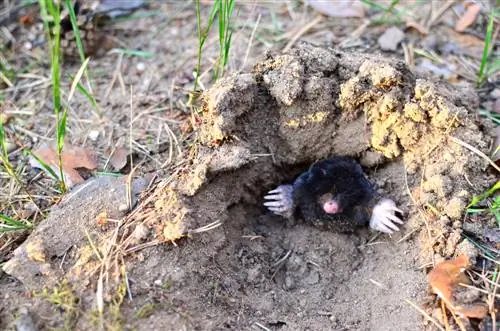- Author admin [email protected].
- Public 2023-12-16 16:46.
- Last modified 2025-01-23 11:22.
Those who live underground notice little of the sun on the surface. So does the mole. He doesn't follow a day-night rhythm, but does have fixed sleeping and waking times. Below you can find out what time a mole digs.

When do moles dig the most?
Moles do not follow a fixed day-night rhythm, but have three waking periods spread over the day, each lasting four to five hours. During this time they dig new tunnels and throw molehills. They are active both during the day and at night.
The mole's sleep and wake rhythm
Moles also sleep, but not eight hours a night like we humans do on average. Instead, moles have three waking periods spread throughout the day. Each waking period lasts about four to five hours. In between, he sleeps for three to four hours in his specially designed bedroom. The mole is therefore active both day and night; However, he doesn't have fixed times.
What does the mole do when he is awake?
The mole uses the waking times for all important activities of the mole's life:
- He digs new tunnels and throws new mounds.
- He looks for food and replenishes his pantry when there is a surplus of food.
- He repairs broken gears and usually in a very short time.
- During mating season, it looks for females by expanding its tunnels more.
- A female mole with young takes care of her offspring.
How much does the mole dig per hour?
Moles dig new tunnels both during the day and at night. In an hour a mole can dig up to 15m of new tunnels. The earth has to be transported to the surface regularly - this is how molehills are created. A mole can throw up to five molehills per hour, and up to 20 during a waking phase!
Particularly active in winter
Unlike other garden inhabitants such as the hedgehog, the squirrel or bats, which spend the winter in hibernation or hibernation, the mole does not hibernate. Quite the opposite: the mole is particularly active in winter - for two reasons:
- In winter there are fewer insects, so the mole has to dig more and deeper to feed.
- From January to March is the mating season and in order to find a female, the mole digs more and further.






